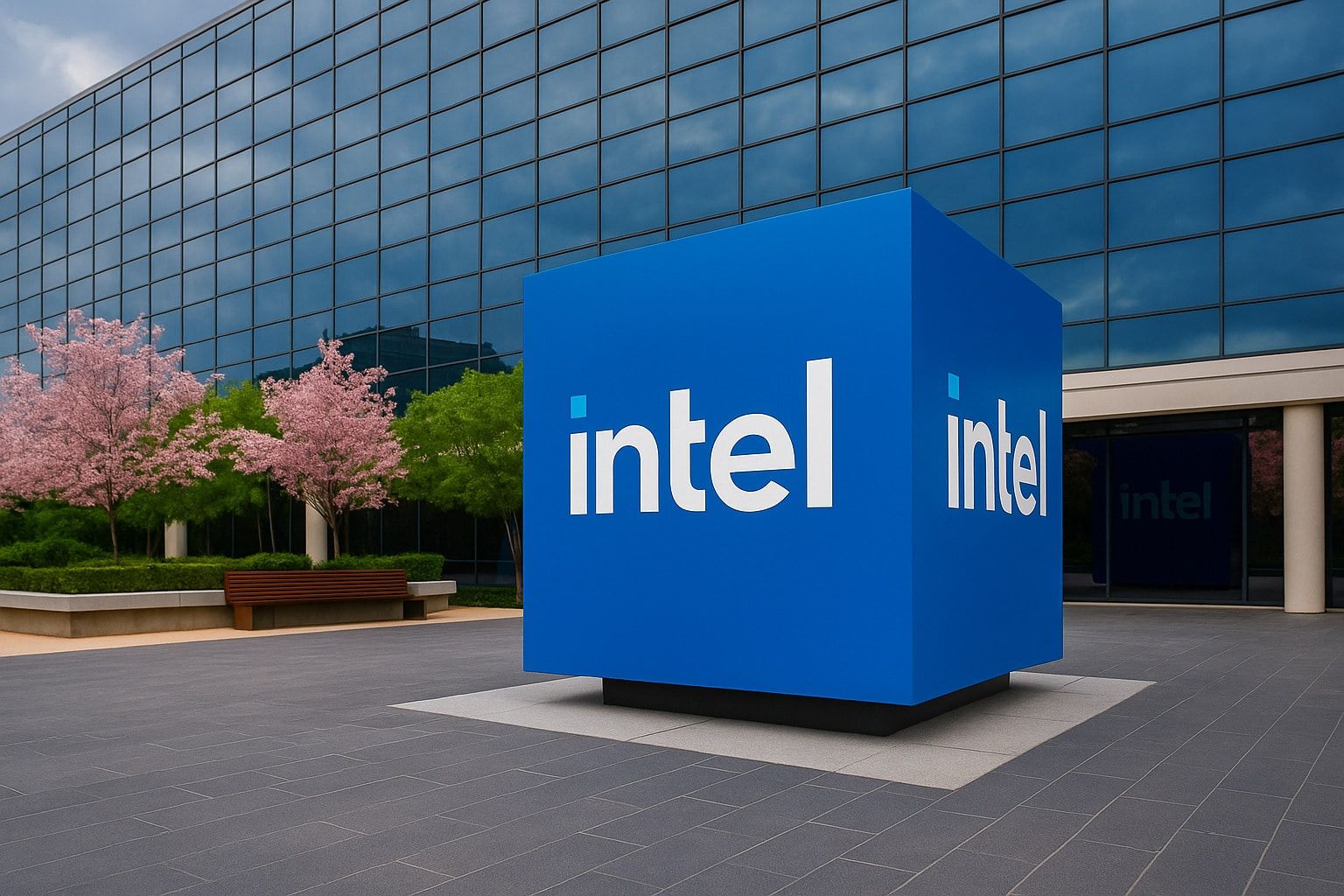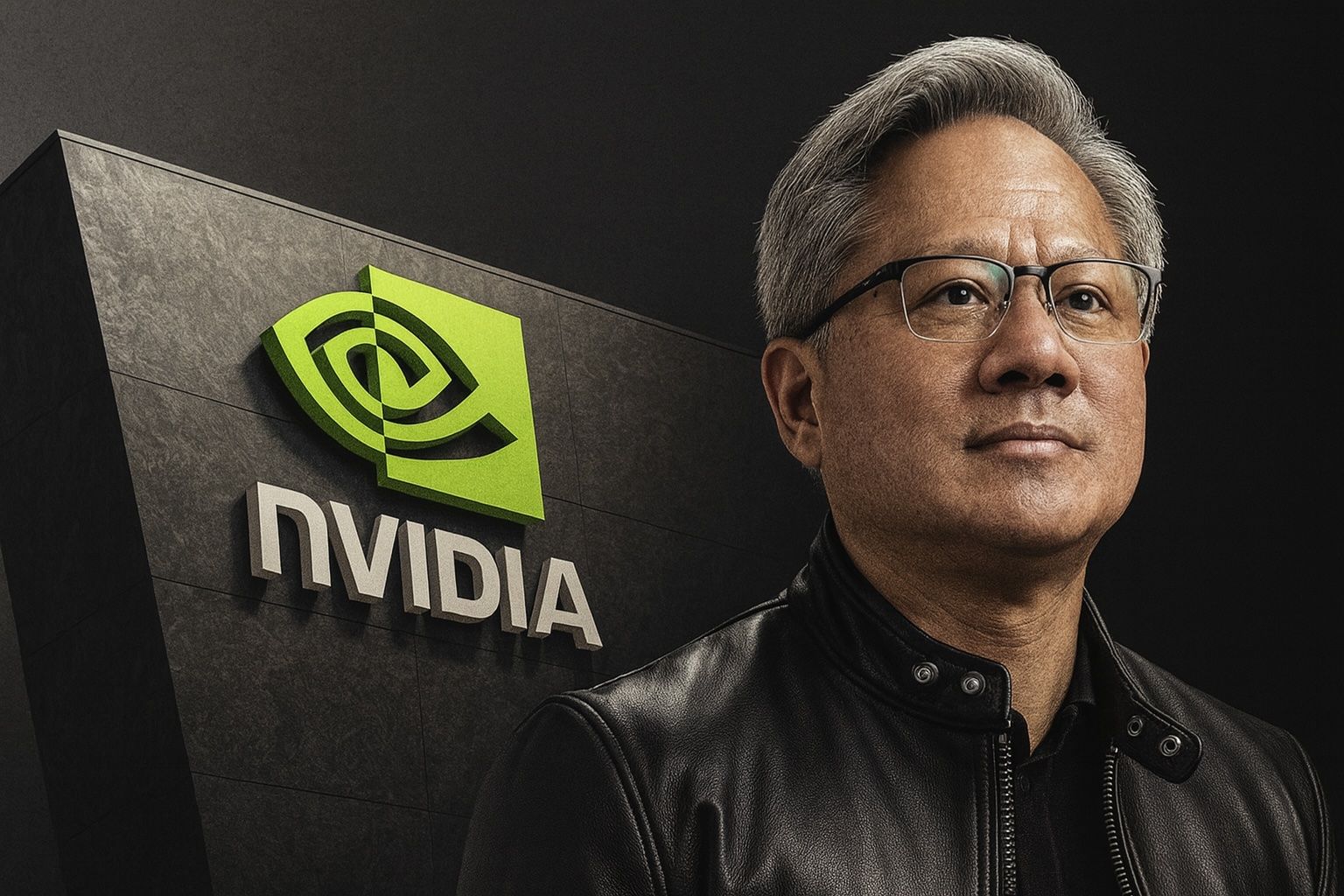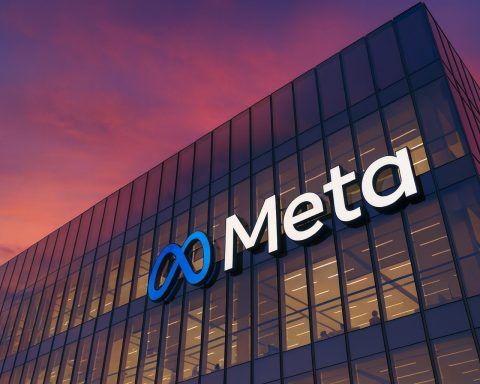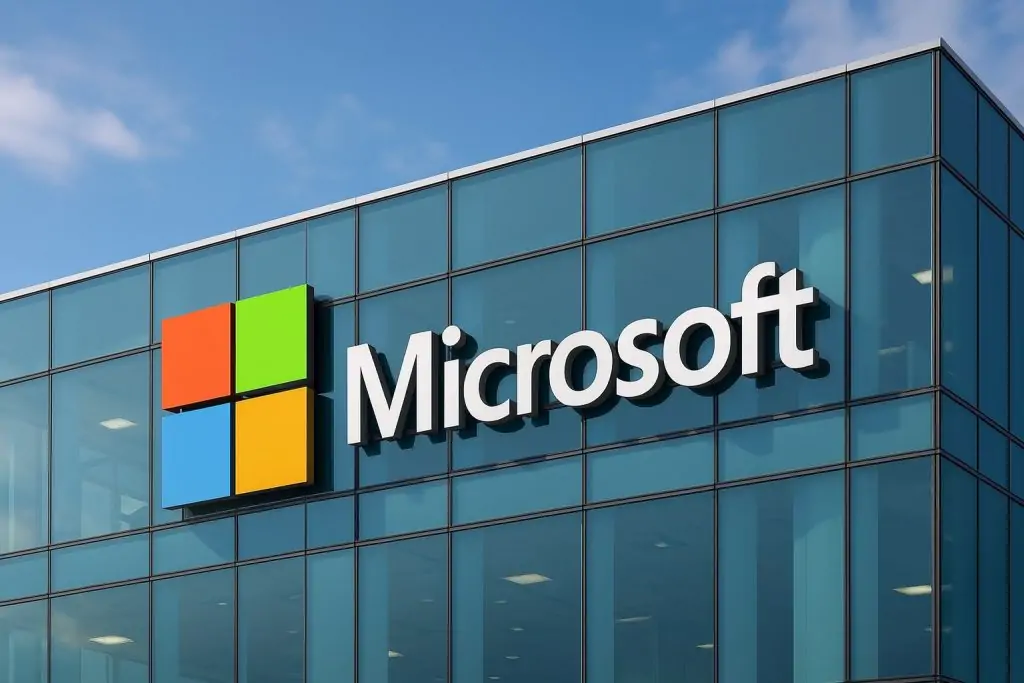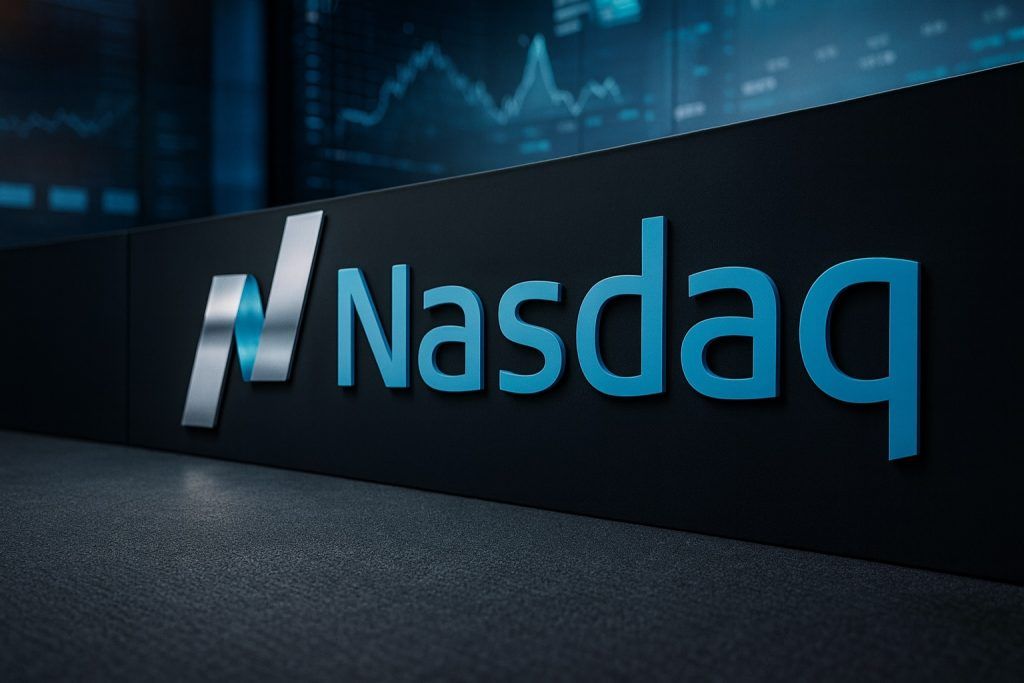Intel Corporation (NASDAQ: INTC) is under pressure today, giving back part of a spectacular 2025 run as Wall Street cools on pricey tech and reassesses the chipmaker’s high‑stakes AI and foundry turnaround story.
As of late trading on November 18, 2025, Intel stock is hovering around $34.10, down roughly 1.7–2.2% from Monday’s close near $34.70, after earlier being flagged by Reuters as one of the chip names dragging on U.S. indices. [1]
At the same time, fresh analyst commentary, new institutional filings, and reports on strategic shifts inside Intel are shaping today’s narrative around the stock.
Intel stock price today: pullback in a nervous tech market
Intel’s move lower isn’t happening in isolation. U.S. stocks are broadly weaker today as investors worry about stretched valuations and fading chances of another near‑term Federal Reserve rate cut. Reuters notes that major indexes are down, with tech the worst‑hit sector and chip stocks such as AMD and Intel falling about 4.2% and 2.2% intraday, respectively, as traders brace for Nvidia’s upcoming earnings and fresh economic data. [2]
Key price and trading context for INTC today:
- Last price: ≈ $34.10
- Day change: about ‑$0.61, roughly ‑1.8% vs. yesterday’s close
- Intraday range: roughly $33.6 – $34.6
- Volume: over 23 million shares traded, pointing to active participation on the pullback.
Despite today’s red numbers, Intel is still well above its 2025 lows:
- 52‑week low: about $17.67
- 52‑week high: about $42.48
- 1‑year performance: shares have roughly doubled from their 2025 low, helped by a wave of strategic investments and renewed optimism around Intel’s AI and foundry ambitions. [3]
That strong rebound explains a lot about why even a modest downgrade or macro wobble now hits the stock harder: expectations, and the valuation multiple, have moved a long way in a short time.
Today’s fresh Intel headlines (November 18, 2025)
1. Bernstein reiterates “Neutral” as overall Street remains skeptical
One of the main headlines today: Sanford C. Bernstein reaffirmed its “Neutral” rating on Intel, keeping a $35 price target, essentially right where the stock is trading. [4]
MarketBeat’s aggregation of analyst calls highlights a still‑cautious Wall Street stance:
- Consensus rating: effectively “Reduce”, with a majority of Hold or Sell ratings.
- Average price target: about $34.84, barely above current levels. [5]
- Recent quarter: Intel delivered Q3 2025 EPS of about $0.23 on $13.65 billion in revenue, beating expectations around $13.1 billion in sales. The company guided Q4 EPS near $0.08, but full‑year Street forecasts still call for a small loss (around ‑$0.11 EPS), underscoring how fragile profitability remains. [6]
Put simply: Intel has clearly turned a corner versus last year’s losses, but analysts are not yet prepared to treat it like a fully restored growth powerhouse, especially at today’s richer valuations.
2. Institutional flow: Citizens Financial ups its Intel stake
Another November 18 filing getting attention: Citizens Financial Group Inc. RI increased its position in Intel by 44% in Q2, adding about 19,000 shares to bring its stake to 62,298 shares, valued around $1.4 million at the time of its most recent SEC filing. [7]
The same MarketBeat report notes that:
- Vanguard Group, Geode Capital, Northern Trust, Invesco, and Amundi all hold large positions and have been modest net buyers over recent quarters.
- Roughly 64.5% of Intel’s float is now held by institutions, a sign that big money remains deeply involved in the name, even as analysts preach caution. [8]
For investors, this mix of skeptical research notes and steady institutional ownership adds nuance: the Street may not be overtly bullish, but major funds aren’t walking away from the turnaround story either.
3. “Intel shares face pressure amid strategic shifts” – packaging wins vs. layoffs
A detailed European market piece syndicated via boerse‑global and Ad‑hoc‑News today captures the tension inside Intel’s story with a simple headline: “Intel Shares Face Pressure Amid Strategic Shifts.” [9]
Key points from that report:
- Apple and Qualcomm interest in Intel packaging: With TSMC running near full capacity, large customers are reportedly exploring alternatives. Apple and Qualcomm are said to be recruiting engineers versed in Intel’s EMIB and Foveros advanced packaging technologies, indicating genuine industry interest in Intel’s ability to assemble complex multi‑chip systems. [10]
- Cost‑cutting and layoffs: The same article notes that Intel recently cut 669 jobs at its Oregon facilities, part of a sweeping global restructuring that has involved tens of thousands of layoffs under CEO Lip‑Bu Tan. [11]
- Licensing deal with Graid Technology: Intel has entered a licensing agreement under which Graid will take over marketing and development of Intel’s Virtual RAID on CPU (VROC) technology, helping reassure enterprise storage customers while allowing Intel to streamline its portfolio. [12]
The article concludes that these strategic moves have not fully offset investor concerns, with Intel shares recently slipping about 2.3% to around $34.71, reflecting a market that sees both genuine progress and unresolved risk. [13]
4. Debate over server CPU cancellation
Tech site SemiAccurate published a November 18 analysis titled “Is Intel’s Server CPU Cancellation A Good Or Bad Thing?”, following news that Intel has canceled a major volume server chip. [14]
Because much of the piece is behind a paywall, we only see the framing, but the core debate is clear:
- On one hand, canceling an uncompetitive server CPU may show new discipline—Intel no longer forcing flawed products to market.
- On the other, frequent roadmap changes add to investor worries about Intel’s ability to execute in data center CPUs while it pursues AI accelerators and foundry work.
This “good surgery or troubling symptom?” question is central to how investors interpret Intel’s 2026–2027 earnings power.
5. Short‑term technical tone turns cautious
Technical commentary today from Economies.com argues that Intel’s recent price action has “exhausted positive chances” in the near term and points to a potential pullback as long as the stock remains below a key resistance zone on their chart. [15]
Separately, an earlier Investopedia analysis highlighted that:
- Intel’s stock price has roughly doubled from its 2025 low, after a near‑40% surge in September.
- The 50‑day moving average crossed above the 200‑day (a “golden cross”) in August.
- Momentum indicators like the RSI and ADX flashed strong uptrend readings, but also warned of a possible overbought, profit‑taking phase. [16]
Today’s sell‑off fits neatly into that picture: a powerful uptrend, now bumping into valuation and macro headwinds that make it easier for traders to lock in gains.
The bigger 2025 story behind today’s move
To make sense of November 18, you have to zoom out. Intel in 2025 is not the same company it was two years ago.
Q3 earnings and a violent re‑rating
In late October, Intel reported Q3 2025 results that beat profit expectations, fueled by deep cost cuts and a more focused capital strategy. [17]
Highlights from Q3 reporting:
- Revenue: about $13.65 billion, up ~3% year over year.
- EPS: roughly $0.23, a sharp swing from losses a year earlier. [18]
- Segment trends:
- Client Computing (PC chips) grew, helped by a rebound in global PC shipments.
- Data Center & AI dipped modestly year over year to around $4.1 billion.
- Intel Foundry logged a multi‑billion‑dollar operating loss (about $2.3 billion) and remains a long‑term investment rather than a profit center. [19]
- Capex: Intel expects to spend about $18 billion in 2025, up from $17 billion in 2024, even as it restructures and trims non‑core projects. [20]
After that release, Intel’s stock spiked as much as 7–8% intraday, hitting its highest level in roughly 18 months, and was up around 90% for 2025 at that point—outperforming even AI darlings Nvidia and AMD. [21]
The $16 billion rescue package: Nvidia, SoftBank and the U.S. government
Perhaps the biggest catalyst of 2025 has been a $16 billion trio of strategic investments:
- Nvidia: a $5 billion stake, taking roughly 4% of Intel’s equity, framed as a long‑term strategic partnership. [22]
- SoftBank: about $2 billion.
- U.S. government: roughly $8.9 billion for close to a 10% stake, tied to CHIPS‑related industrial policy and onshoring incentives. [23]
Coverage from Reuters and others stresses that these deals give Intel a much stronger balance sheet and political backing, but leave open questions about dilution, governance and long‑term returns in a foundry business that is still loss‑making. [24]
AI and foundry: Intel’s long‑term upside case
Intel Foundry and the Microsoft AI chip angle
A widely discussed Nasdaq/Motley Fool piece in October argued that Intel Foundry could become a major winner in the AI boom, especially if it can convert marquee customers like Microsoft into multi‑generation deals. [25]
According to that report:
- Microsoft has been linked to Intel’s 18A process and is rumored to be using Intel 18A or 18A‑P to manufacture a next‑gen Maia AI accelerator, after using TSMC for the first version.
- Intel 18A is described as the only widely available process with backside power delivery, promising better energy efficiency—a big deal in hyperscale AI data centers. [26]
If these reports bear out, Intel’s role as a contract manufacturer for custom AI chips could matter more than whether its own branded accelerators beat Nvidia or AMD head‑to‑head.
New AI data center GPU: “Crescent Island”
At the 2025 OCP Global Summit in October, Intel also announced a new data center GPU code‑named “Crescent Island,” optimized for AI inference with high memory capacity and better energy efficiency. [27]
The product is designed to:
- Slot into cloud and enterprise AI inference workloads.
- Complement, rather than replace, Intel’s CPU and Gaudi accelerator lineup.
It’s still early, but the move signals Intel is not exiting the high‑end AI accelerator race, even if it’s behind Nvidia and AMD in market share.
Advanced packaging as a pressure‑valve for a capacity‑starved industry
Between the boerse‑global article on Apple/Qualcomm interest and a flood of industry analysis, there’s a clear theme: advanced packaging capacity is scarce, and Intel’s EMIB/Foveros stack may be in the right place at the right time. [28]
Layer on other macro signals:
- China’s move to ban foreign AI chips from state‑funded data centers, aimed mainly at Nvidia and other U.S. players, which may accelerate domestic chip projects and alter global capacity allocation. [29]
- Calls from AI players like Elon Musk for foundry partners capable of producing 100–200 billion AI chips a year, a volume far above current industry capacity. [30]
All of this reinforces why investors have been willing to pay up for Intel: if it executes, its manufacturing footprint and packaging tech could become extremely valuable.
Risks and red flags that matter after today
For every bullish talking point, there’s a risk side that helps explain today’s pullback.
1. Rich valuation on still‑fragile earnings
Following the Q3 rally and investment news, Intel has recently traded at a forward P/E north of 70x, compared with roughly 30x for Nvidia and 40x for AMD, according to Reuters’ late‑October coverage. [31]
At the same time:
- Foundry is losing billions.
- Data Center & AI revenue is barely growing.
- Full‑year EPS is still expected to be slightly negative. [32]
That combination—high multiple, fragile earnings, long‑dated promises—is exactly what makes the stock sensitive to macro scares and cautious analyst notes like today’s Bernstein call.
2. Execution risk in manufacturing and AI
Intel itself has warned that yields on its advanced 18A process will likely remain below industry norms until around 2027, even as it spends heavily on capex. [33]
On the human‑capital side, last week brought another jolt:
- Chief Technology Officer and AI lead Sachin Katti left Intel to join OpenAI, with Reuters reporting that CEO Lip‑Bu Tan will personally oversee Intel’s AI and Advanced Technologies groups going forward. [34]
While the move signals that AI is a top‑level priority, it also underlines how competitive the talent market is, and how crucial flawless execution will be over the next 2–3 years.
3. Restructuring and morale
From Intel’s own disclosures and independent reporting:
- Tan’s turnaround has involved plans for tens of thousands of layoffs worldwide, closure of some fab projects, and spin‑offs of non‑core divisions. [35]
- Local reports, like the Oregon job cuts mentioned today, highlight the disruption on the ground. [36]
Restructurings can unlock value—but they also risk hurting morale, slowing execution, and making it harder to ship complex new products on schedule.
What to watch next for Intel stock after today’s dip
Looking beyond the November 18 pullback, several near‑term and medium‑term catalysts are worth tracking:
- Any color from today’s conference appearances
Intel’s investor‑relations calendar shows executives participating in events such as the RBC Capital Markets TIMT Conference today, where packaging wins, Nvidia collaboration timelines, and foundry margin targets are likely key talking points. Ts2 Tech+1 - Formal customer announcements for advanced packaging and foundry
Today’s reports of Apple and Qualcomm interest are encouraging, but the market will want signed, volume‑based deals that clarify pricing, duration, and expected margins. [37] - Updates on 18A yield progress and foundry losses
Any acceleration in yield improvement or narrowing of foundry losses would help justify current valuations; disappointments could force another reset. - Further analyst revisions
With the stock now dipping back into the mid‑$30s, some previously cautious analysts might see better risk‑reward, while others may cut targets if they doubt Intel’s ability to convert AI hype into durable cash flow. [38] - Macro and AI‑trade sentiment
News flow around Nvidia’s earnings, AI “bubble vs. boom” debates, and Fed policy—exactly the worries driving today’s broader sell‑off—will continue to ripple through Intel shares. [39]
Bottom line: a high‑expectations turnaround stock taking a breather
On November 18, 2025, Intel stock sits at the intersection of exciting technology headlines and mounting skepticism:
- The bullish side features:
- The bearish side includes:
Today’s drop therefore looks less like a shock and more like a pause in a high‑stakes re‑rating. Intel has moved from being a battered deep‑value turnaround to an AI‑leveraged “debate stock” where every analyst note, layoff announcement, or packaging customer headline can move the needle.
For traders and longer‑term investors alike, the key question after November 18 isn’t just “How low could Intel go on profit‑taking?” but “How much of the AI + foundry + strategic‑investor upside is already in the price?”
Disclaimer: This article is for informational purposes only and does not constitute financial advice. Always do your own research or consult a licensed financial professional before making investment decisions.
References
1. www.reuters.com, 2. www.reuters.com, 3. www.marketbeat.com, 4. www.marketbeat.com, 5. www.marketbeat.com, 6. www.marketbeat.com, 7. www.marketbeat.com, 8. www.marketbeat.com, 9. www.ad-hoc-news.de, 10. www.ad-hoc-news.de, 11. www.ad-hoc-news.de, 12. www.ad-hoc-news.de, 13. www.ad-hoc-news.de, 14. www.semiaccurate.com, 15. www.economies.com, 16. www.investopedia.com, 17. www.datacenterdynamics.com, 18. www.marketbeat.com, 19. www.datacenterdynamics.com, 20. www.datacenterdynamics.com, 21. www.reuters.com, 22. www.reuters.com, 23. coincentral.com, 24. www.reuters.com, 25. www.nasdaq.com, 26. www.nasdaq.com, 27. newsroom.intel.com, 28. www.ad-hoc-news.de, 29. www.reuters.com, 30. www.tomshardware.com, 31. www.reuters.com, 32. www.marketbeat.com, 33. www.datacenterdynamics.com, 34. www.reuters.com, 35. en.wikipedia.org, 36. www.ad-hoc-news.de, 37. www.ad-hoc-news.de, 38. www.marketbeat.com, 39. www.reuters.com, 40. www.reuters.com, 41. www.ad-hoc-news.de, 42. newsroom.intel.com, 43. www.investopedia.com, 44. www.datacenterdynamics.com, 45. www.nasdaq.com
